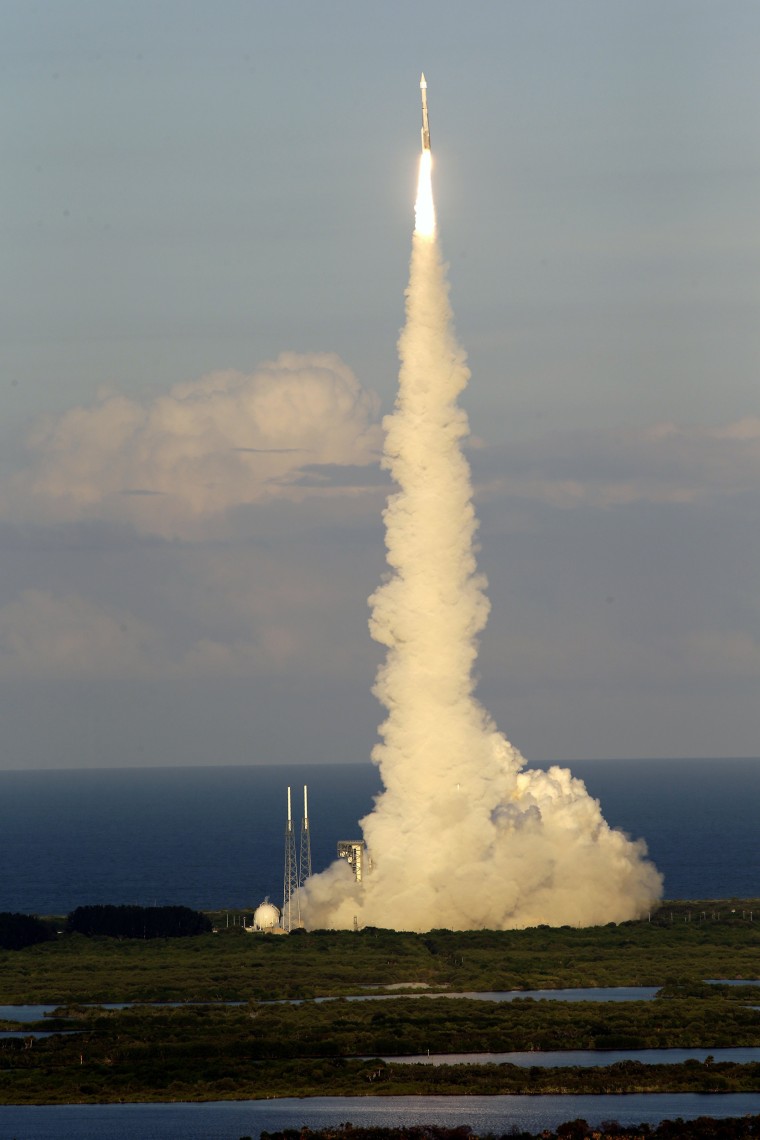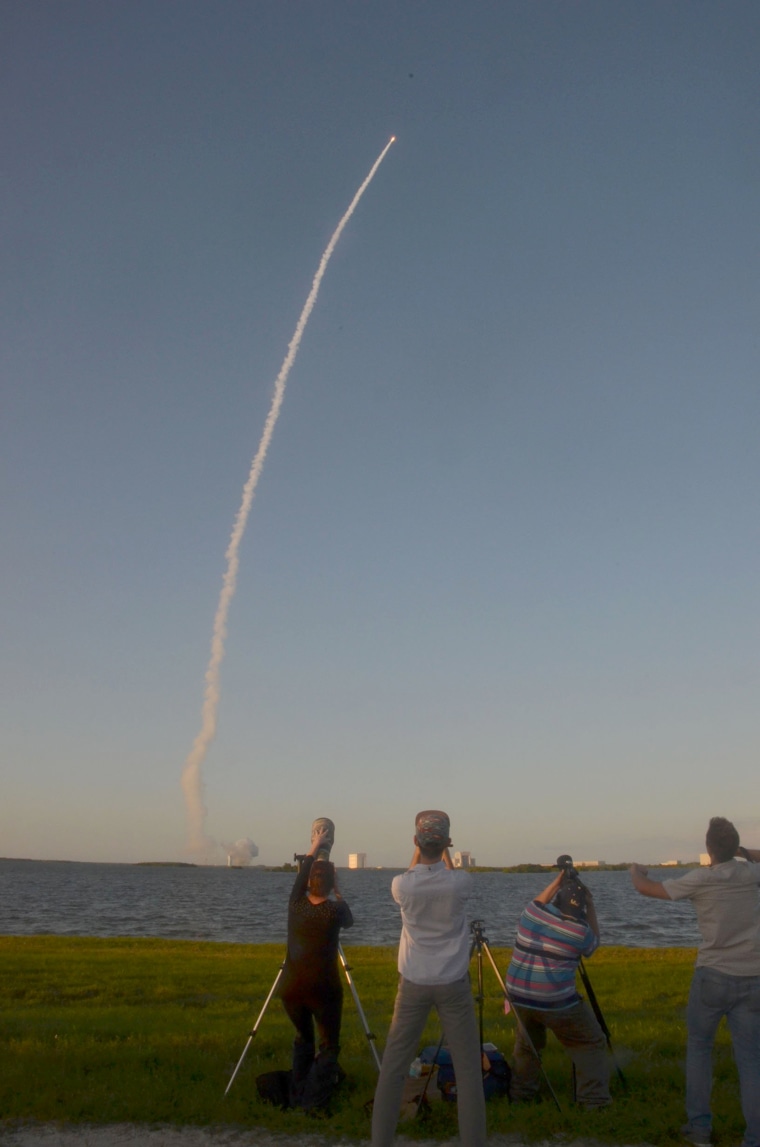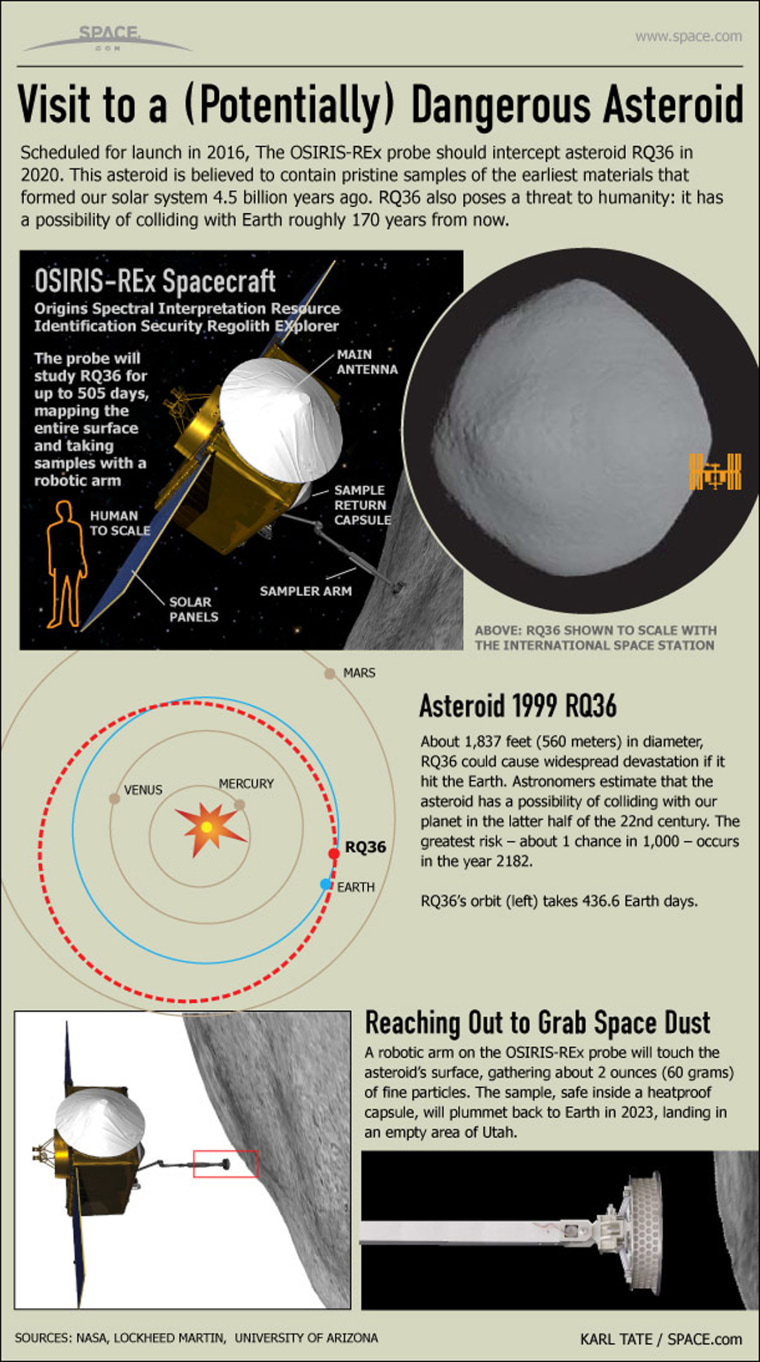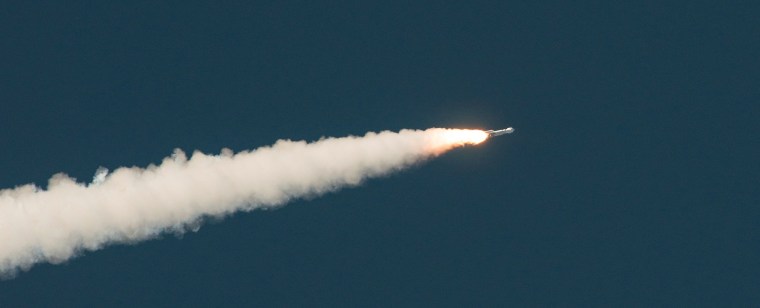R

Bennu is thought to be covered with organic compounds dating back to the earliest days of the solar system.
"You can think of these asteroids as literally prebiotic chemical factories that were producing building blocks of life 4.5 billion years ago, before Earth formed, before life started here," NASA astrobiologist Daniel Glavin said before launch.
Scientists believe asteroids and comets crashing into early Earth delivered water and organic compounds that seeded the planet for life. Atomic-level analysis of samples from Bennu could help them prove that theory.

Once it settles into orbit around Bennu in 2018, Osiris-Rex will spend up to two more years mapping the asteroid's surface and taking inventory of its chemical and mineral composition. Although Bennu occupies the same approximate orbital distance from the sun, it poses little threat to Earth. NASA estimates that there is a one-in-2,700 chance that Bennu might hit Earth sometime between 2175 and 2199.
The U.S. space agency also hopes Osiris-Rex will demonstrate the advanced imaging and mapping techniques needed for future science missions and for upcoming commercial asteroid-mining expeditions.
How NASA's Asteroid Sample Return Mission Will Work

